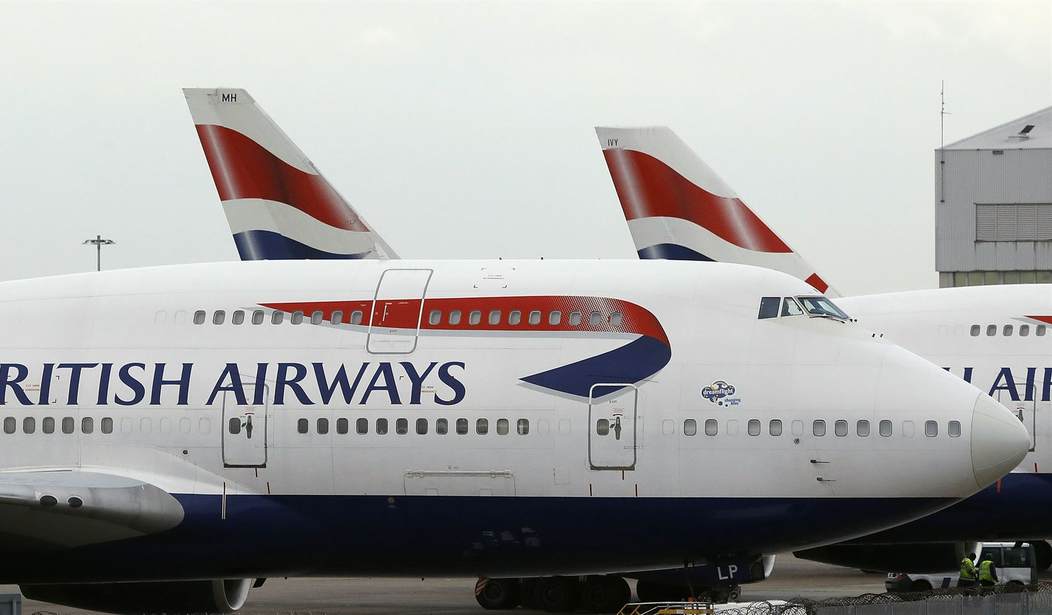A $3 million taxpayer subsidy to British Airways to re-establish direct flights between Pittsburgh and London is grounded in questionable assumptions likely to cause more local economic harm than good, concludes the Allegheny Institute for Public Policy.
“(W)ith the most probable effects of the subsidy being to damage competitors while increasing the net outflow of resources from the region, it is hard to see any upside to handing tax dollars to the airline,” says Jake Haulk, president of the Pittsburgh think tank (in Policy Brief Vol. 18, No.31).
British Airways will return direct service to Pittsburgh International Airport (PIT) after nearly 20 years. PIT will become the carrier’s 27th U.S. destination and, by far, the smallest airport in terms of enplaned passengers (47th in the country last year).
The new service will bow in April 2019, beginning with one flight daily on Tuesdays, Wednesdays, Fridays and Saturdays. The Allegheny County Airport Authority is hoping the service expands to five days.
The airline will receive $1.5 million in taxpayer subsidies annually for two years. It joins a growing chorus of carriers receiving public subsidies to fly into Pittsburgh, some of which soon will be competing directly with British Airways.
And the obvious question is if the new British Airways flights will lead to new passengers at PIT or merely cannibalize from existing flights.
“According to the British Airways spokesperson, there is pent-up demand for travel to Europe. If that’s the case, why are subsidies necessary and why haven’t U.S. airlines jumped at the chance to offer nonstop flights to serve the pent-up demand?” Haulk asks. “Something does not add up here.”
Not only is it folly to subsidize passengers to fly out of the country on a foreign carrier to spend money as tourists abroad, assumptions made regarding British Airways’ annual economic impact in Southwestern Pennsylvania – $57 million in gross sales and not net value produced, according to a study prepared for the Airport Authority by EDR Group of Boston – are dubious.
Recommended
EDR, which projects a hard-to-believe occupancy of 81 percent for each flight, also says that 29 percent of passengers will be UK and other European residents. Which means U.S. residents would represent 71 percent of the passenger count. Which means spending by Pennsylvania travelers would be 2.5 times greater than foreign British Airways travelers to the Pittsburgh region.
“That is not a win for the region,” says Haulk, a Ph.D. economist. “Indeed, it is just the opposite.”
Additionally, the EDR study fails to take into account the percentage of travelers that would have flown other airlines to and from England or Europe.
“Obviously, any reduction in U.S. airline revenue will lower the economic benefits of the arrival of British Airways,” the think tank scholar says.
But it is the base assumptions of the number of jobs added locally and the claimed income of those jobs that most seriously fails to pass the economic impact sniff test.
“Note that most of the projected new jobs in the study will be at restaurants and hotels as a result of the increase in foreign visitors to the region,” Haulk says. “Bear in mind, however that” the highly unrealistic claimed “11,763 visitors to the region over 365 days is an average of only 33 per day.
“Even if they stay seven days on average, that represents only 82,000 hotel or other accommodation room nights. The city alone has around 2.6 million room nights available per year and the rest of the region likely has at least half that many. Thus, the UK/European visitor stays would make up only 2 percent or so of the region’s available room nights,” Haulk says.
That said, those visitors would have to spend more than $80 million, or $7,000 each, to produce the study’s predicted 564 new jobs – jobs, by the way, that for the most part would pay far below EDR’s claimed wage of just under $38,000. That wage claim, by the way, is inflated by including additional higher-income positions unlikely to materialize to support so few new jobs.
“All these factors make the airport’s $3 million misguided taxpayer investment unlikely to ever pay for itself unless British companies with significant investment and potential employment that otherwise would not have located facilities in the region decide to place operations in Southwestern Pennsylvania,” Haulk says.

























Join the conversation as a VIP Member